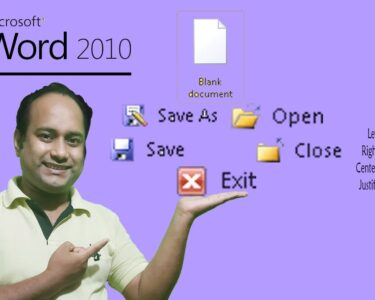Beginner’s Guide to Microsoft Word
Introduction:
Microsoft Word is a widely used word processing software that empowers users to create, edit, and format documents with ease. This tutorial provides step-by-step instructions for beginners on how to navigate and utilize the essential features of Word.
Creating a New Document:
- Open Microsoft Word on your computer.
- Click on "Blank document" or "New" from the File menu.
- A blank document will be created.
Formatting Text:
- Select the text you want to format.
- Use the font options (e.g., size, color, style) in the Home tab to change the appearance of the text.
- Apply formatting styles (e.g., bold, italic, underline) using the relevant buttons in the Home tab.
Paragraph Formatting:
- Select the paragraph you want to format.
- Use the Paragraph group in the Home tab to adjust the alignment, indentation, and line spacing.
- Create bullet points or numbered lists using the appropriate buttons in the Paragraph group.
Adding Images and Tables:
- Click on the "Insert" tab.
- To insert an image, click on "Pictures" and select the image file from your computer.
- To insert a table, click on "Table" and either draw a table or specify the number of rows and columns.
Saving and Printing:
- To save your document, click on "File" and then "Save." Choose a file name and location.
- To print your document, click on "File" and then "Print." Select the printer and print settings, and then click "Print."
Tips for Navigating Word:
- Use the ribbon at the top for quick access to commands.
- Use the "Find" feature (Ctrl+F) to search for specific words or phrases.
- Use the "Replace" feature (Ctrl+H) to find and replace text quickly.
- Utilize the "Undo" and "Redo" buttons in the Quick Access Toolbar to revert or redo changes.
Conclusion:
This tutorial has provided a basic overview of how to use Microsoft Word. By following these steps, beginners can get started with creating and formatting documents with ease. For further in-depth knowledge, refer to the Microsoft Word help documentation or explore additional tutorials online.


